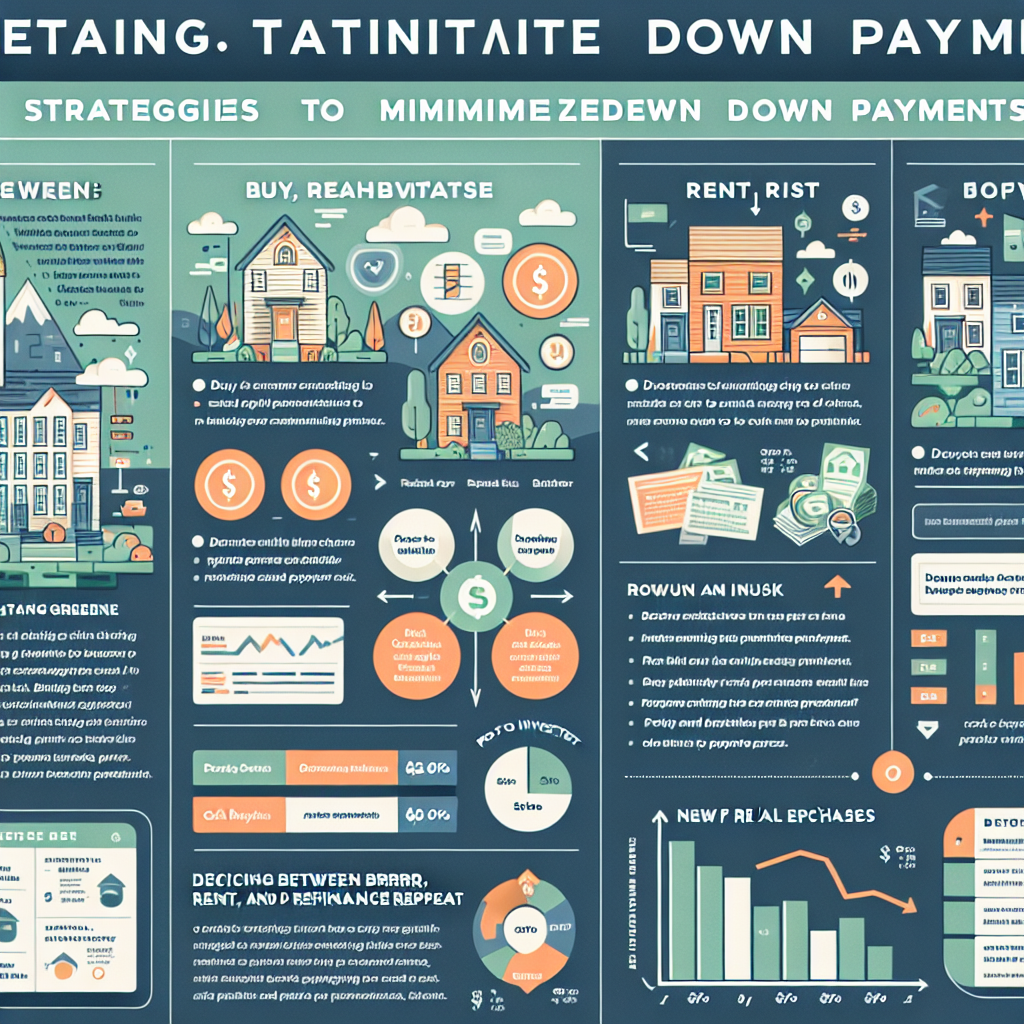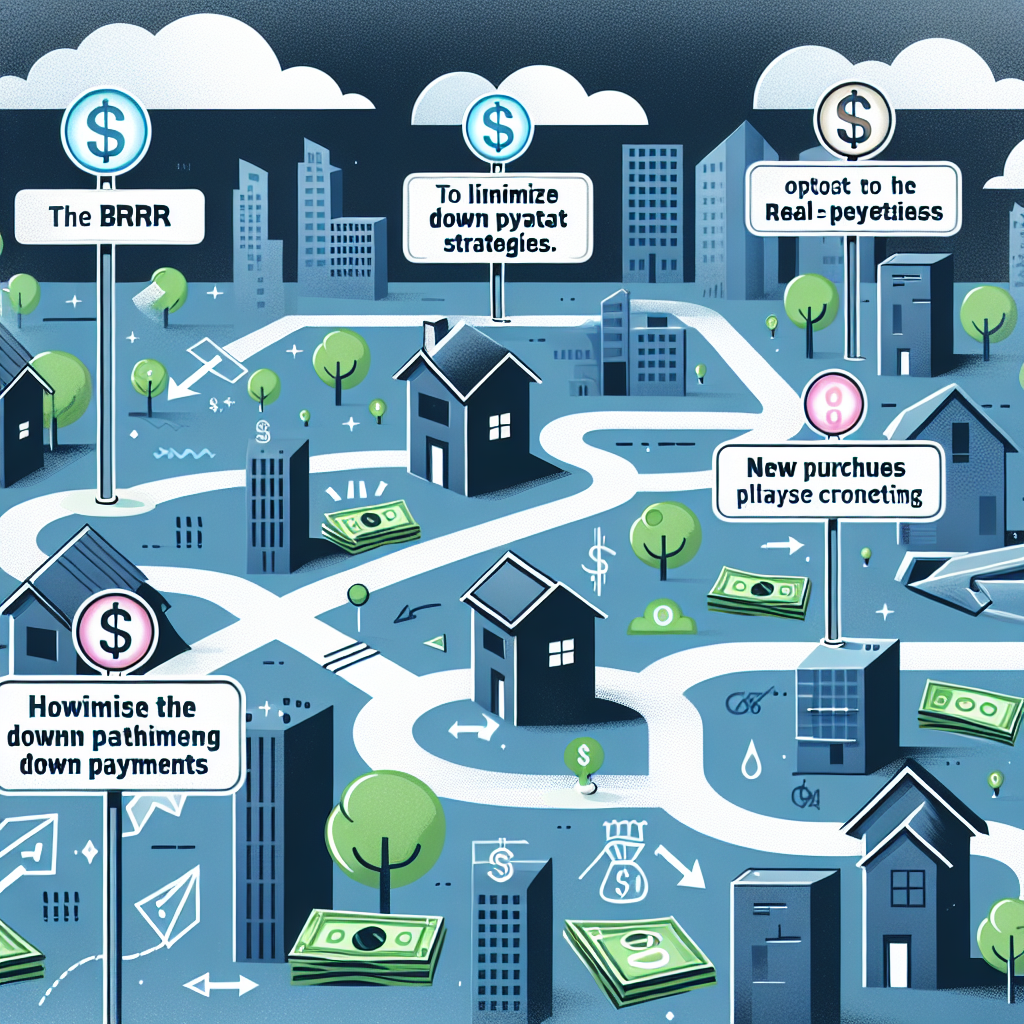-
Table of Contents
- Navigating Greene: Strategies to Minimize Down Payments and Deciding Between BRRRR and New Purchases
- Understanding Down Payments in Real Estate
- Why Down Payments Matter
- Strategies to Minimize Down Payments
- 1. FHA Loans
- 2. VA Loans
- 3. USDA Loans
- 4. Negotiating with Sellers
- 5. Down Payment Assistance Programs
- BRRRR vs. New Purchases: An Overview
- BRRRR Method
- Advantages of BRRRR
- Challenges of BRRRR
- New Purchases
- Advantages of New Purchases
- Challenges of New Purchases
- Case Studies: BRRRR vs. New Purchases
- Case Study 1: BRRRR Method
- Case Study 2: New Purchase
- Deciding Between BRRRR and New Purchases
- Investment Goals
- Risk Tolerance
- Available Resources
- Conclusion
Navigating Greene: Strategies to Minimize Down Payments and Deciding Between BRRRR and New Purchases

Real estate investment is a lucrative venture, but it comes with its own set of challenges, particularly when it comes to financing. One of the most significant hurdles for investors is the down payment. This article delves into strategies to minimize down payments and explores the decision-making process between the BRRRR (Buy, Rehab, Rent, Refinance, Repeat) method and purchasing new properties. By the end of this article, you will have a comprehensive understanding of how to navigate these aspects of real estate investment effectively.
Understanding Down Payments in Real Estate
Down payments are a critical component of real estate transactions. They represent a percentage of the property’s purchase price that the buyer must pay upfront. Typically, down payments range from 3% to 20% of the property’s value, depending on the type of loan and the buyer’s creditworthiness.
Why Down Payments Matter
Down payments serve several purposes:
- Risk Mitigation: They reduce the lender’s risk by ensuring that the buyer has a financial stake in the property.
- Equity Building: They provide the buyer with immediate equity in the property.
- Loan Qualification: They can affect the buyer’s ability to qualify for a loan and the terms of that loan.
Strategies to Minimize Down Payments
Minimizing down payments can free up capital for other investments or expenses. Here are some strategies to consider:
1. FHA Loans
Federal Housing Administration (FHA) loans are government-backed loans that require lower down payments, often as low as 3.5%. These loans are particularly beneficial for first-time homebuyers or those with less-than-perfect credit.
2. VA Loans
Veterans Affairs (VA) loans are available to veterans, active-duty service members, and certain members of the National Guard and Reserves. These loans often require no down payment and offer competitive interest rates.
3. USDA Loans
The United States Department of Agriculture (USDA) offers loans for rural property purchases. These loans can also require no down payment, making them an excellent option for properties in eligible rural areas.
4. Negotiating with Sellers
In some cases, sellers may be willing to cover part or all of the down payment to expedite the sale. This is more likely in a buyer’s market where sellers are motivated to close deals quickly.
5. Down Payment Assistance Programs
Various state and local programs offer down payment assistance to eligible buyers. These programs can provide grants or low-interest loans to cover down payment costs.
BRRRR vs. New Purchases: An Overview
The BRRRR method and purchasing new properties are two popular strategies in real estate investment. Each has its own set of advantages and challenges.
BRRRR Method
The BRRRR method involves buying a distressed property, rehabbing it, renting it out, refinancing it, and then repeating the process. This strategy allows investors to recycle their capital and build a portfolio of rental properties.
Advantages of BRRRR
- Equity Creation: Rehabbing a property can significantly increase its value, creating instant equity.
- Cash Flow: Renting out the property generates a steady stream of income.
- Capital Recycling: Refinancing allows investors to pull out their initial investment and use it for the next property.
Challenges of BRRRR
- Time-Consuming: The process of rehabbing and refinancing can be lengthy and complex.
- Risk of Overruns: Rehab projects can encounter unexpected costs and delays.
- Market Dependence: The success of refinancing depends on market conditions and property appraisals.
New Purchases
Purchasing new properties involves buying ready-to-occupy homes or newly constructed properties. This strategy is more straightforward but comes with its own set of considerations.
Advantages of New Purchases
- Less Hassle: New properties require minimal repairs and maintenance.
- Attractive to Tenants: New homes often attract higher-quality tenants willing to pay premium rents.
- Warranty Coverage: New properties typically come with builder warranties, reducing the risk of unexpected expenses.
Challenges of New Purchases
- Higher Costs: New properties generally have higher purchase prices and may require larger down payments.
- Slower Equity Growth: Unlike rehabbing, new properties may not offer immediate equity gains.
- Market Sensitivity: The value of new properties can be more sensitive to market fluctuations.
Case Studies: BRRRR vs. New Purchases
To illustrate the differences between the BRRRR method and new purchases, let’s examine two case studies.
Case Study 1: BRRRR Method
Investor Profile: John, a seasoned real estate investor with a knack for identifying undervalued properties.
Property: A distressed single-family home in a growing neighborhood, purchased for $100,000.
Rehab Costs: $30,000 for renovations, including a new roof, updated kitchen, and modernized bathrooms.
Total Investment: $130,000
Post-Rehab Appraisal: $180,000
Refinance: John refinances the property at 75% of the appraised value, pulling out $135,000.
Outcome: John recovers his initial investment and gains $5,000 in additional capital, which he uses to fund his next BRRRR project. The property is rented out, generating a monthly cash flow of $1,200.
Case Study 2: New Purchase
Investor Profile: Sarah, a new investor looking for a hassle-free entry into real estate.
Property: A newly constructed townhouse in a suburban area, purchased for $250,000.
Down Payment: 20%, or $50,000
Monthly Rent: $1,800
Outcome: Sarah enjoys a steady rental income with minimal maintenance issues. The property appreciates at a modest rate of 3% per year, providing long-term equity growth.
Deciding Between BRRRR and New Purchases
The choice between the BRRRR method and new purchases depends on several factors, including your investment goals, risk tolerance, and available resources.
Investment Goals
If your primary goal is to build equity quickly and recycle your capital, the BRRRR method may be more suitable. On the other hand, if you prefer a more passive investment with steady cash flow, new purchases might be the better option.
Risk Tolerance
The BRRRR method involves higher risks due to the uncertainties of rehab projects and refinancing. If you have a higher risk tolerance and experience in managing rehab projects, BRRRR can offer significant rewards. Conversely, new purchases are generally less risky and more predictable.
Available Resources
The BRRRR method requires more time, effort, and expertise in property management and rehabbing. If you have the necessary resources and skills, BRRRR can be a highly effective strategy. New purchases, while requiring a larger initial investment, are less demanding in terms of time and effort.
Conclusion
Navigating the complexities of real estate investment requires a thorough understanding of financing options and investment strategies. Minimizing down payments through FHA, VA, and USDA loans, as well as negotiating with sellers and leveraging down payment assistance programs, can make real estate investment more accessible. Deciding between the BRRRR method and new purchases depends on your investment goals, risk tolerance, and available resources.
The BRRRR method offers the potential for rapid equity growth and capital recycling but comes with higher risks and demands. New purchases provide a more straightforward, less risky investment with steady cash flow and long-term appreciation. By carefully considering these factors and employing the strategies discussed, you can make informed decisions and successfully navigate the world of real estate investment.
Ultimately, the key to success in real estate investment lies in thorough research, strategic planning, and a willingness to adapt to changing market conditions. Whether you choose the BRRRR method or new purchases, a well-informed approach will help you achieve your financial goals and build a robust real estate portfolio.








